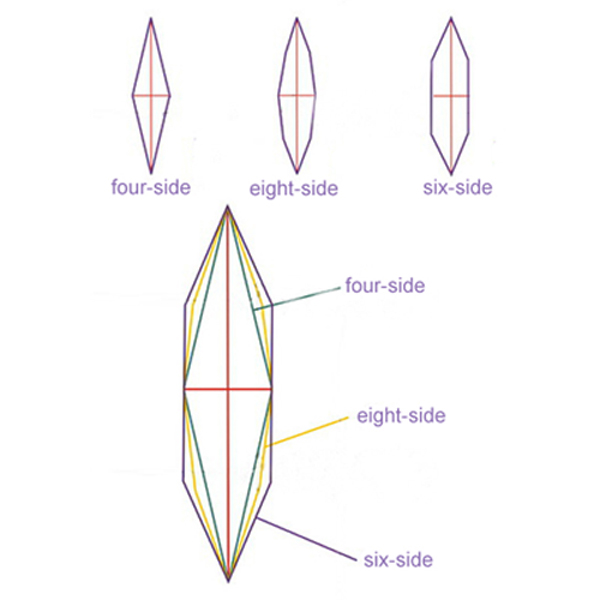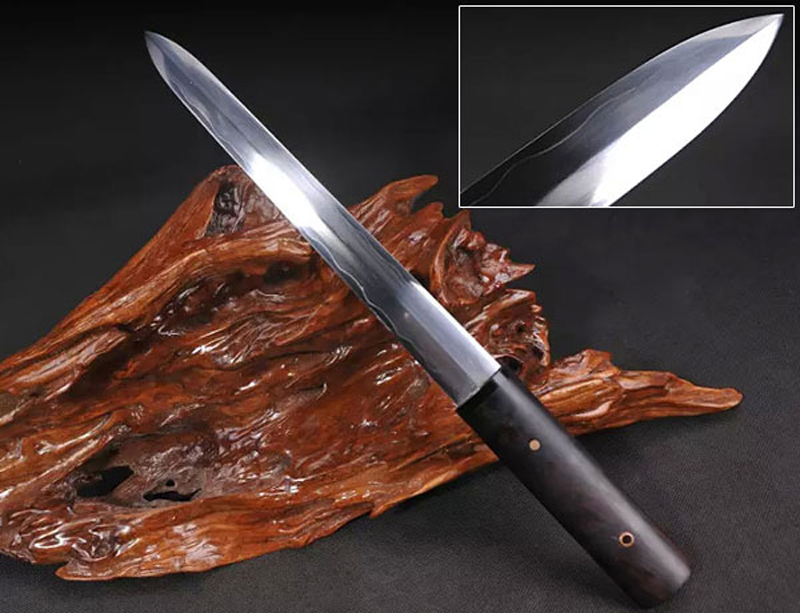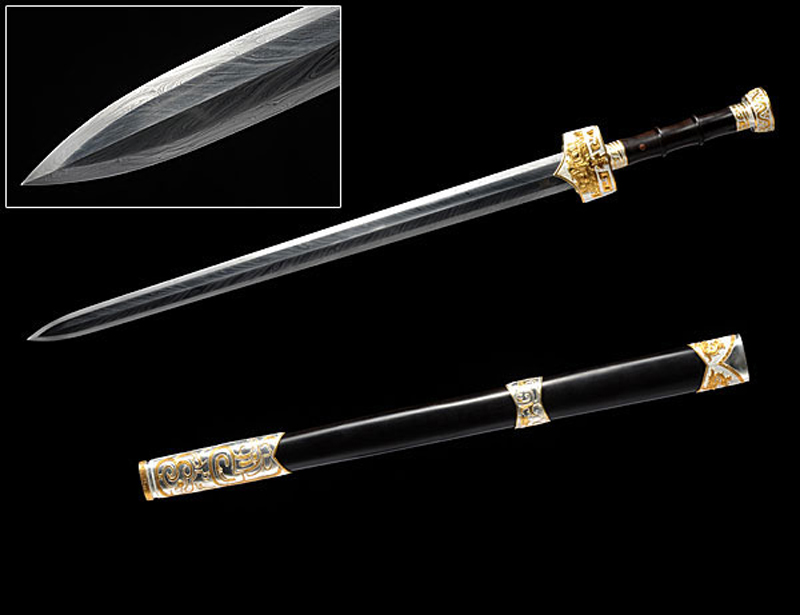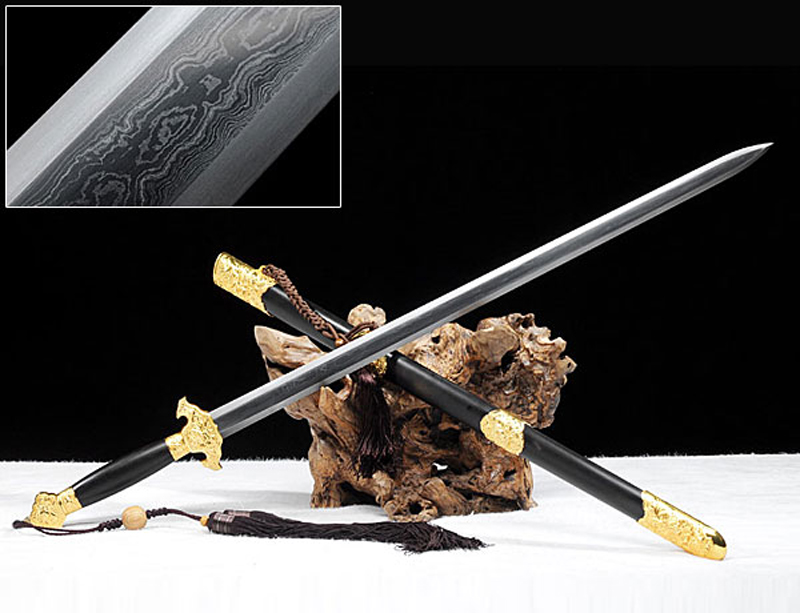Is there a sword that can break the steel bars and blow the hair in the world?
10 Sep


0 Comment(s)
3714 View(s)
There are always people who say, "I want a sword that can break the steel bars in seconds and blow the hair." To be honest, such a sword really does not exist. It is not that the sharpness of the sword is not reached, nor is the hardness of the sword not reached, but the sharpness of breaking the steel bars and blowing the hair are two completely opposite requirements.
As we all know, there are four sides, six sides and eight sides of the sword which will have different performance. As you can see from the picture below.

1. Weight: If the length, width and thickness of the sword are equal, then the six-sided sword has the largest volume, the heaviest weight and the largest inertia, suitable for cutting hard objects; The eight sides are thicker than the four sides, and the strength is of course stronger than the four sides, which is more time consuming and laborious than the four sides; The four sides are lighter than the eight sides which is more flexible in practice.
2. Sharpness: The quality of the sword has nothing to do with the sharpness. Under the same force, the thinner the edge, the smaller the area of the object that comes into contact, the greater the pressure, the easier it is to cut the object.
3. Cutting edge: When the four sides, six sides, and eight sides are thick open edges, when used to cut hard objects such as iron wire, the six-sided and eight-sided slashing effect is better, because the cutting edge angle is larger and thicker, slashing hard objects are more powerful; When the four sides, the six sides, and the eight sides are all fine-edged, when used to cut paper and cut bamboo, the four-sided slashing effect is better, because the cutting edge angle is small and thin, and the object is easily cut. For example, a thin A4 paper can easily scratch your fingers, but a book will not.
4. Pressure and hardness: the smaller the area of the edge that contacted object, the greater the pressure, the easier it is to cut the object. Similarly, the greater pressure, the greater the pressure, the greater the damage to the blade. This requires hardness to support, the harder the hardness, the greater the pressure, which is why the sword on the hardness requirements are particularly high.
5. High hardness: when the hardness reaches the requirement of slashing steel wire, improper operation can cause collapse when the sword is used to cut hard objects such as steel bars.
6. Low hardness: When the hardness is less than the requirement of slashing steel wire, it will curl the blade when the sword cuts hard objects such as steel bars.
7. Brittleness and hardness: hardness is directly proportional to brittleness. The higher the hardness, the higher the brittleness, and it is easy to cause collapse or even break, so the hardness of the blade has a certain limit. The Japanese samurai sword is very hard and brittle. The angle of the cutting edge is small and light. It usually cuts straw mat, bamboo in the performance test, won't cut steel bar, or it is easily to cause break.
8. Under the same hardness condition, the long sword is easier to break than the short sword, because the greater the distance between the center of gravity and the two ends, the greater the strength that needs to be withstood. Therefore, the hardness of the short sword can be made higher than the long sword.
Want a unique sword? Feel free to contact us:
Phone: 086 13739276006
Email: [email protected]
Website: www.hanbonforge.com
Custom Sword Page: www.hanbonforge.com/CUSTOM-SWORDS/Custom-Your-Own-Swords
Phone: 086 13739276006
Email: [email protected]
Website: www.hanbonforge.com
Custom Sword Page: www.hanbonforge.com/CUSTOM-SWORDS/Custom-Your-Own-Swords




Leave a Comment